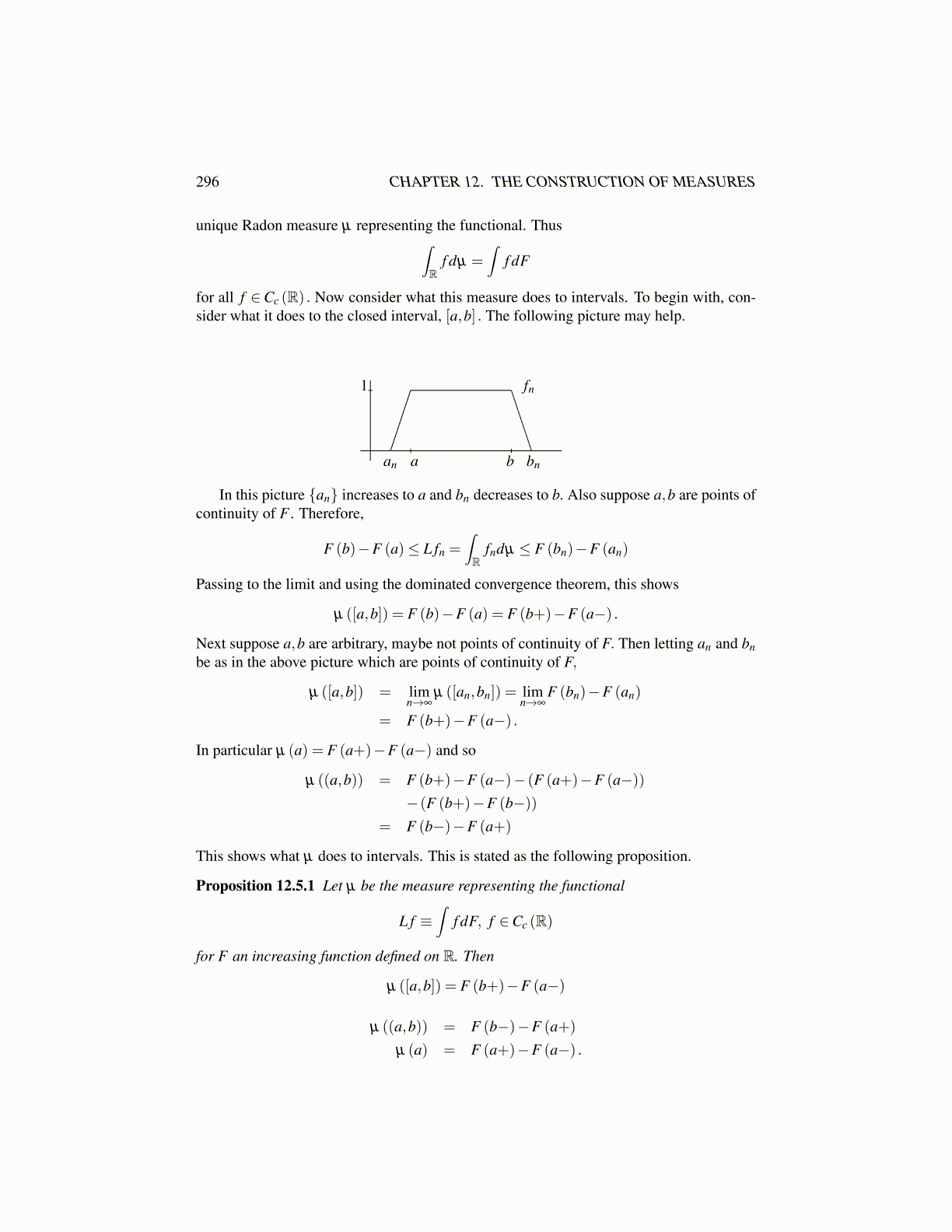
296 CHAPTER 12. THE CONSTRUCTION OF MEASURES
unique Radon measure µ representing the functional. Thus∫R
f dµ =∫
f dF
for all f ∈Cc (R) . Now consider what this measure does to intervals. To begin with, con-sider what it does to the closed interval, [a,b] . The following picture may help.
aan
1
b bn
fn
In this picture {an} increases to a and bn decreases to b. Also suppose a,b are points ofcontinuity of F . Therefore,
F (b)−F (a)≤ L fn =∫R
fndµ ≤ F (bn)−F (an)
Passing to the limit and using the dominated convergence theorem, this shows
µ ([a,b]) = F (b)−F (a) = F (b+)−F (a−) .
Next suppose a,b are arbitrary, maybe not points of continuity of F. Then letting an and bnbe as in the above picture which are points of continuity of F,
µ ([a,b]) = limn→∞
µ ([an,bn]) = limn→∞
F (bn)−F (an)
= F (b+)−F (a−) .
In particular µ (a) = F (a+)−F (a−) and so
µ ((a,b)) = F (b+)−F (a−)− (F (a+)−F (a−))−(F (b+)−F (b−))
= F (b−)−F (a+)
This shows what µ does to intervals. This is stated as the following proposition.
Proposition 12.5.1 Let µ be the measure representing the functional
L f ≡∫
f dF, f ∈Cc (R)
for F an increasing function defined on R. Then
µ ([a,b]) = F (b+)−F (a−)
µ ((a,b)) = F (b−)−F (a+)
µ (a) = F (a+)−F (a−) .